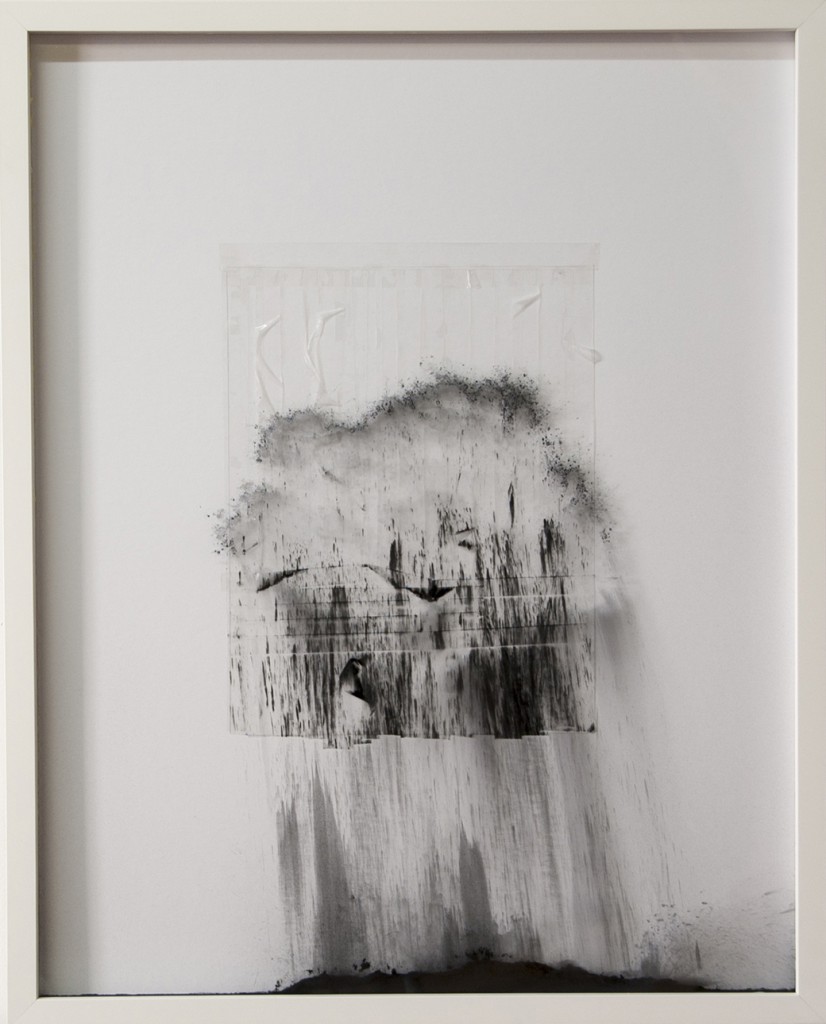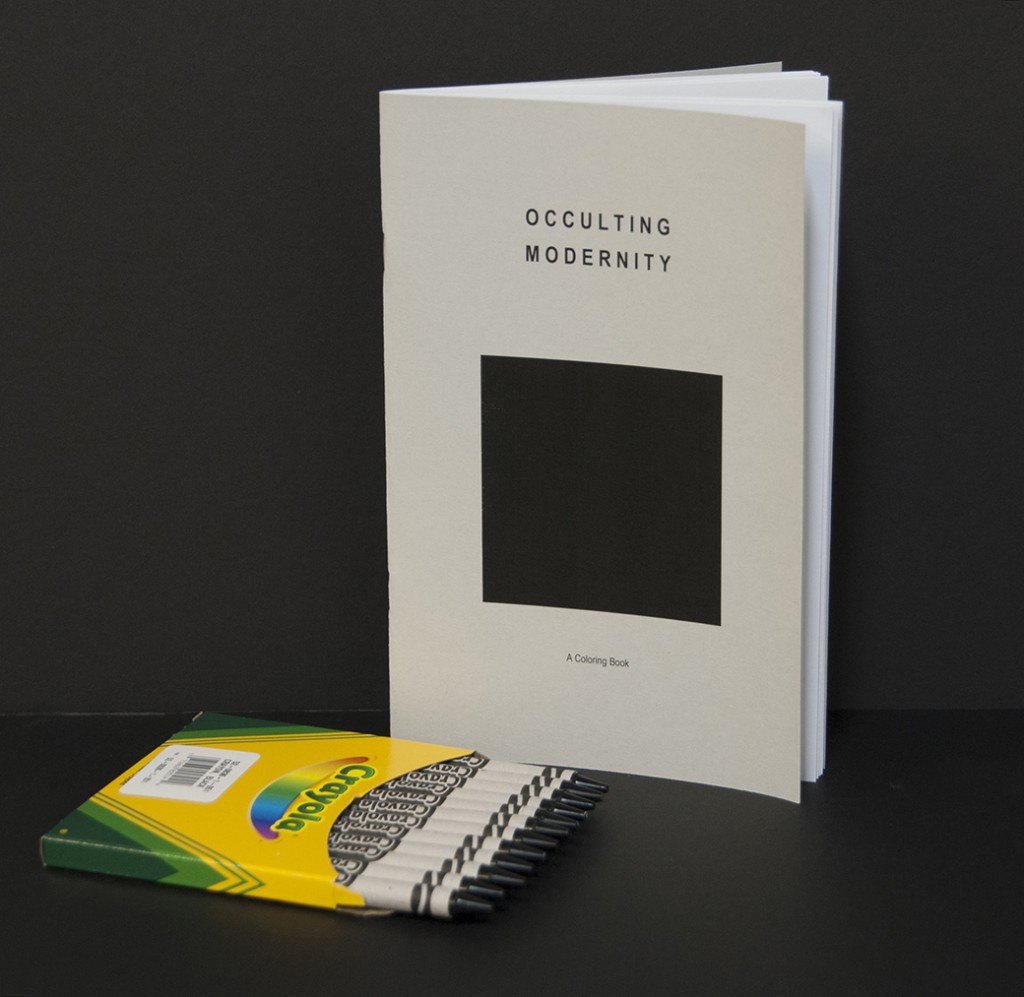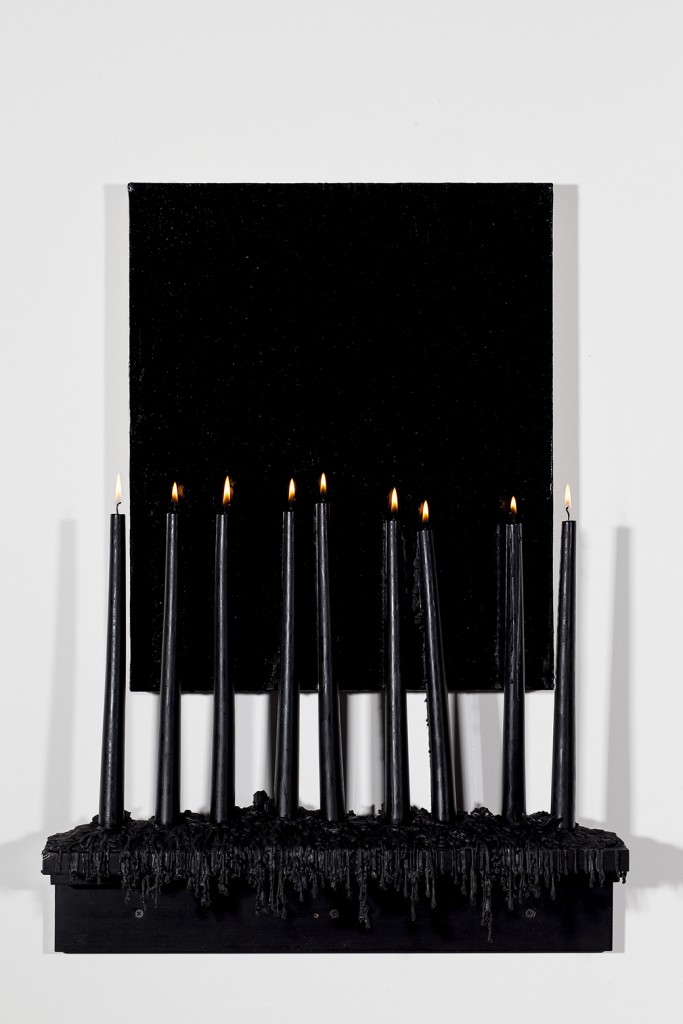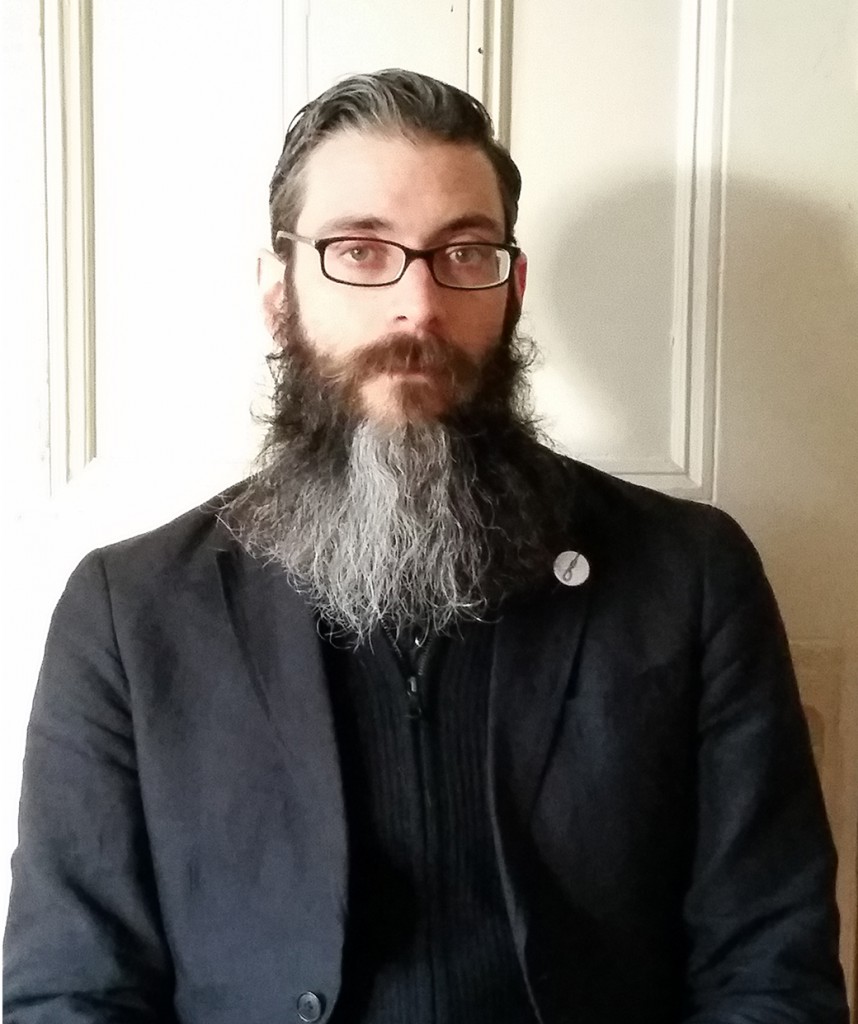
Vincent Como. Procession of Dust (Entropy, Ontology, and the Hubris of Mankind) 002, 2014. Frame, double-sided tape, dry pigment; 16 x 20 inches. Courtesy of the artist and MINUS SPACE, Brooklyn, NY, © Vincent Como.
“It is a random occurrence that we are conscious beings,” Vincent Como said. These words were among the artist’s first when I visited his house in the Bushwick neighborhood of Brooklyn, in December 2014, to talk about magic. Although he contended that he would never describe his work as magical, and his opinions about art in general strayed from any romantic connotations of the word, I felt compelled to have this conversation with Como. His work is rife with mysticism: Burning candles placed before paintings, as with altars, slowly destroy themselves. A coloring book named Occulting Modernity comes with a package of twelve Crayola crayons, all the identical shade of black. Moreover, Como’s artworks are begotten from dust in his “Black Laboratory,” the name of his studio and website. “Humans are really insignificant, and we are a total oddity,” Como stated. Yet in spite of the bleakness of this statement, Como, whose broad-ranging practice includes curating and writing, conveyed sincerity and engagement as an artist.
One aspect of Como’s practice that sets him apart from his peers is his unwavering commitment to reduction. For more than sixteen years, Como has exclusively focused on black, both as a color and subject matter. This extremely restrictive palette was born out of a fascination with formal elements in many of the two-dimensional, minimalist works he admired. As a student at the Cleveland Institute of Art, Como experienced profound feelings of weight and presence while inspecting the tenuous graphite lines in an Agnes Martin painting. When expertly executed, simple gestures in line and color can unlock surprising emotions and associations for an audience, Como discovered. Against the backdrop of a maximalist culture enamored with endless technological advances, Como has remained captivated by the idea that less is more.

Vincent Como. Occulting Modernity, 2014. Zine with crayons; 5.5 x 8.5 inches, 15 pages. Published in an open edition under the imprint Dark Star Editions. Courtesy of the artist and MINUS SPACE, Brooklyn, NY, © Vincent Como.
More specifically, Como strives for a precise type of transformation of energy and material: to achieve more with less will reap greater rewards for a viewer. For example, a recent body of work entitled Procession of Dust (Entropy, Ontology, and the Hubris of Mankind) endeavors to cover the broad topics in the title via concision. These works were created using simple means, dry pigments, and double-sided tape. Like many of Como’s works, the ongoing series is an exercise in economy.
Como began the series in 2014 by creating three small studies in his studio, in the Greenpoint neighborhood of Brooklyn. The scale was expanded for the eight works he has since completed. In each work, loose pigment dust is trapped between the glass and the backing mat of a picture frame. Como selected the pigment of lamp black because of the purity of this particular hue. The extremely matte nature of this pigment creates a type of matter that seems almost inaccessible. The pigment has a tendency to absorb the light around it, resulting in a peculiar sensation of the absence of light, like a black hole.
Once the pigments have been placed into the frame, Como’s conscious intervention with the work stops. From that point forward, Como intends each work to reflect the changes in its environment, such as movements from an earthquake and from the work’s travels. The double-sided tape adhered to the mat board records how the object is jostled and moved. This results in works that dramatically darken over time. In essence, as these works are shifted in space, they are involved in their own transformation.

Vincent Como. Paradise Lost 004, 2011-present. First publicly exhibited in 2013. Oil on linen with wood, wax, and fire; approximately 20 x 5.5 x 26.5 inches overall. Courtesy of the artist and MINUS SPACE, Brooklyn, NY, © Vincent Como.
“I recognize the absurdity of making art,” Como explained. “It’s the same absurdity as existence. We are here for a finite period of time. What are we doing, and does it even matter?” he continued. Como grapples with these ontological questions, but he does not need answers. For Como, the process of seeking is more fruitful than any answer.
Likewise the artist does not expect his work to ask questions or yield explicit results.
Rather, he hopes that the works will spark a conversation. To Como, the Procession series is like a cosmic metaphor. If humans are specks of dust on a tiny rock in this universe, then their inevitable decay records their transformations over time. The more we move, the more we change. In parallel, each work in the Procession series is sensitive to movement. For Como, an unanswerable search at odds with logic and a quiet hopefulness in place of reason befit these moving works of art.

Photo of the Artist, 2014.
Vincent Como lives and works in Brooklyn, New York. He is represented by Minus Space Gallery and is a founding member of TSA New York, an artist-run gallery in Bushwick.



